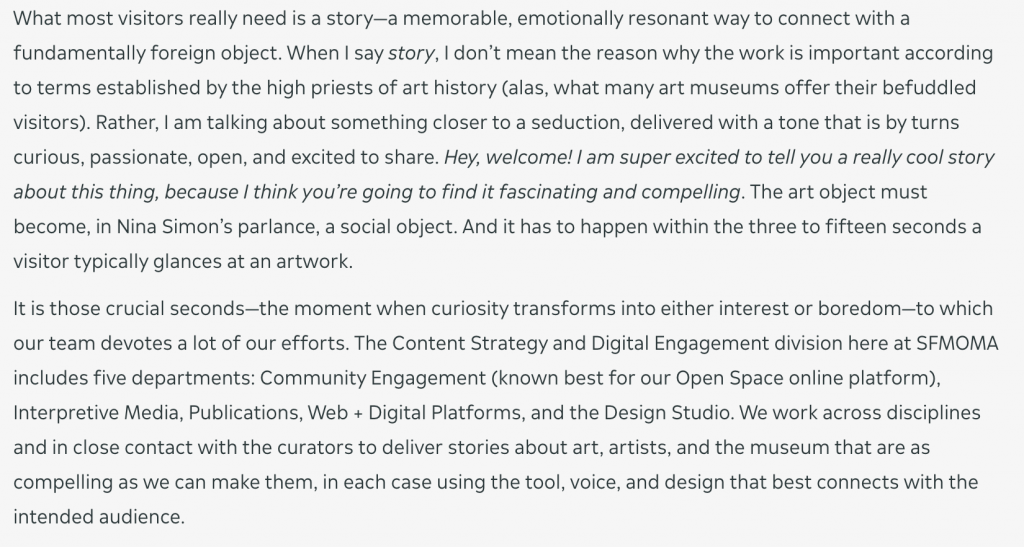A carpenter slowly chisels away excess wood he doesn’t need to carve out a piece of ornament, furniture, or art.
I feel like for this final assignment, we are slowly chiselling away the excess material we have from our previous project work and slowly shaping, moulding, and rendering our ideas together. We pretty much set up a whole block of wood with our last project work for ourselves, and now we’re just picking moments we thought that worked well with our concept of isolation. This by no means indicate that we are doing less work for this assignment, but have a more defined direction that we would like to take. Hence, the group has taken on a more linear approach to creating our multi-linear narrative, by incorporating 3 different perspectives to a specific scenario, and experimenting this approach on 3 different scenarios. In simpler terms, 3 shots of the same person, in the same scenario, and we’re planning to shoot 3 different scenarios, which amounts to 9 media fragments in total. Also, we’ll be employing the use of audio recording, as well as certain sound effects that might contribute to the different perspectives and scenarios.
For the first perspective, we decided to go with a point-of-view shot, hence probably a GoPro would come in handy for this. The second perspective would be what our subject thinks of reality, basically letting the viewer see/hear what’s going on in her head. And the third, what is the actual reality, like a CCTV surveillance camera. The second perspective would give us an opportunity to really try out and experiment with different approaches of filmmaking, and post production in portraying the inner psyche of our subject.
We have a rough idea of where these 3 scenarios will take place. We realised we spent too much time thinking of places to shoot that could reiterate our theme of isolation with our last project work, but with a clearer concept in mind, we stuck with simple locales that could be easily identifiable with people. These 3 places are being at home, in class, and walking along an alley.
I’m going off on a tangent with this next paragraph, but I found an interesting article online regarding the San Francisco Museum of Modern Art (SFMOMA) and how they are trying to engage to a wider audience with the means of using digital platforms.
The above excerpt was taken from the article. And I think it is a very good summary of how new media spaces function both virtually and in physical space. The attention span or as advertisers and media agencies call, the “grab”, is the first few seconds that the audience invest their time in a particular media artefact, are the most crucial in determining whether they’ll carry on viewing the exhibit. Hence, every exhibit has to have an engaging experience from start to end, as defined by the article as having a ‘story’. Something the audience can take home, something they can talk about with their friends, or family on the way home, or a memory they can recall upon, or as specified in the excerpt, ‘a social object’.
This can be applied to multiple levels of online screen production, from our very own project work, to the entire media event held at the end of the semester. The experience is crucial, and so are the people involved in it.



Leave a Reply